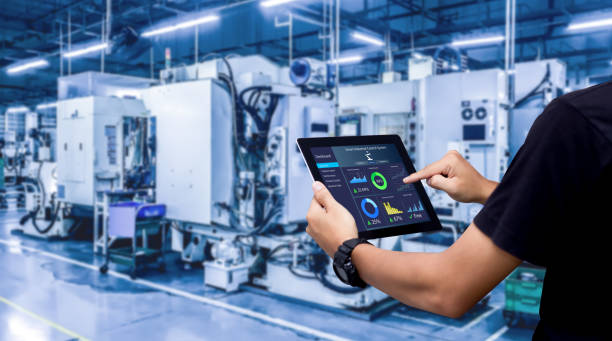Adaptive Manufacturing: Reshaping Production for Market Volatility
Adaptive manufacturing is revolutionizing how industries respond to unpredictable market demands and supply chain disruptions. This innovative approach combines flexible production systems, real-time data analytics, and agile workforce strategies to create highly responsive manufacturing environments. As businesses face increasing uncertainty, adaptive manufacturing offers a competitive edge by enabling rapid pivots in production without compromising quality or efficiency.

The Evolution of Manufacturing Flexibility
Manufacturing flexibility has long been a goal for industries seeking to improve their responsiveness to market changes. However, traditional approaches often fell short, constrained by inflexible equipment, lengthy setup times, and rigid supply chains. The roots of adaptive manufacturing can be traced back to the lean manufacturing principles popularized in the 1980s, which emphasized waste reduction and continuous improvement.
As technology advanced, concepts like flexible manufacturing systems (FMS) emerged, allowing for greater variability in production. Yet, these systems still required significant capital investment and were limited in their ability to handle rapid, large-scale changes. The true breakthrough came with the integration of advanced digital technologies, enabling real-time data analysis and decision-making that forms the core of today’s adaptive manufacturing paradigm.
Key Components of Adaptive Manufacturing
Adaptive manufacturing relies on several interconnected components to create a truly responsive production ecosystem:
-
Modular Production Lines: Easily reconfigurable equipment and workstations allow for quick changes in product mix or volume.
-
Advanced Sensors and IoT Devices: These tools provide real-time data on machine performance, product quality, and production flow.
-
AI-Powered Analytics: Sophisticated algorithms process vast amounts of data to predict market trends and optimize production schedules.
-
Digital Twins: Virtual replicas of physical production systems enable rapid testing and implementation of changes without disrupting actual operations.
-
Agile Workforce Management: Cross-trained employees and flexible scheduling systems ensure human resources can adapt alongside technological changes.
Real-World Applications and Benefits
Across various industries, companies are reaping the benefits of adaptive manufacturing. In the automotive sector, for example, a major European manufacturer implemented an adaptive system that reduced model changeover times from weeks to days, allowing them to respond more quickly to shifts in consumer preferences.
In the consumer electronics industry, a leading smartphone producer used adaptive manufacturing principles to manage the simultaneous production of multiple product generations, seamlessly scaling production up or down based on real-time sales data. This approach resulted in a 30% reduction in inventory costs and a 15% increase in market share.
The benefits of adaptive manufacturing extend beyond just flexibility. Companies report significant improvements in resource efficiency, product quality, and time-to-market for new products. Moreover, the ability to quickly pivot production in response to supply chain disruptions has proven invaluable in maintaining business continuity during global crises.
Challenges in Implementing Adaptive Manufacturing
While the potential benefits of adaptive manufacturing are clear, implementation is not without its challenges. One of the primary hurdles is the significant upfront investment required in technology and infrastructure. Legacy systems and equipment may need to be overhauled or replaced entirely, which can be cost-prohibitive for some organizations.
Another challenge lies in the cultural shift required within organizations. Adaptive manufacturing demands a mindset of continuous change and learning, which can be at odds with traditional manufacturing cultures that prioritize stability and routine. Managers and workers alike must be prepared to embrace constant adaptation and skill development.
Data security and integration present additional concerns. As manufacturing systems become more interconnected and reliant on real-time data, ensuring the integrity and security of this information becomes paramount. Companies must invest in robust cybersecurity measures and carefully manage the integration of various data sources to create a cohesive adaptive system.
Strategies for Successful Adaptation
• Conduct a thorough assessment of current manufacturing capabilities and identify areas ripe for adaptive improvements
• Invest in scalable, modular technologies that can grow and change with your business needs
• Prioritize workforce development, focusing on cross-training and cultivating a culture of adaptability
• Start with pilot projects to demonstrate value and gain organizational buy-in before full-scale implementation
• Develop strong partnerships with technology providers and industry peers to stay abreast of latest adaptive manufacturing innovations
As markets continue to evolve at an unprecedented pace, adaptive manufacturing stands out as a crucial strategy for maintaining competitiveness. By embracing this approach, manufacturers can transform uncertainty from a threat into an opportunity, positioning themselves to thrive in an increasingly volatile business landscape. The journey to adaptive manufacturing may be challenging, but for those who successfully navigate it, the rewards in terms of agility, efficiency, and market responsiveness are substantial. As we look to the future, it’s clear that the ability to adapt quickly and effectively will be a defining characteristic of successful manufacturing enterprises.





